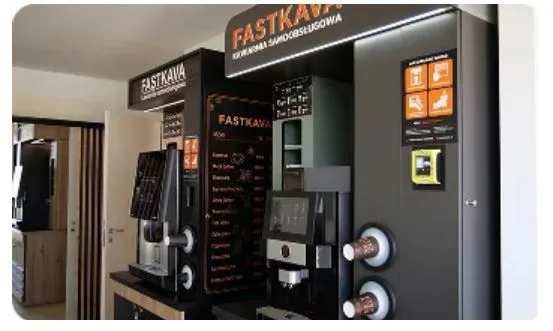Get Your Wallet (and Life) Together: The Ultimate Guide to Financial Freedom
Financial freedom. It sounds like something out of a dream, right? Maybe you imagine traveling the world without worrying about money or enjoying the freedom to take a year off work if you felt like it. The thing is, financial freedom isn’t just for the rich or the lucky few. It’s something anyone can achieve with the right mindset, habits, and a little bit of guidance. Ready to get your wallet (and life) together? Let’s dive in.
Step 1: Understand Your Current Financial Situation
Before you can start building a better financial future, you need to know where you stand right now. Think of it like cleaning out your closet before a shopping spree. You can’t pick out what fits if you don’t know what’s already in there.
Start by tracking your income and expenses. How much do you make each month, and how much are you spending? Apps like Mint or YNAB (You Need A Budget) can help you see exactly where your money is going. You might be surprised by how much you’re spending on things you don’t even need. Ever looked at your subscriptions and realized you’re paying for stuff you haven’t used in months? Time to trim that fat.
Next, take a hard look at your debt. Credit cards, student loans, car payments, what’s hanging over your head? The goal here isn’t to feel bad about it, it’s just to get clear on what you’re working with. When you see your numbers laid out, you can start making a plan to tackle them.
Don’t forget to check your credit score too. This is your financial report card, and it can impact everything from your ability to get a loan to how much you pay in interest. It’s free to check, so there’s no excuse not to.
Step 2: Build Better Banking Habits
Here’s the thing: your banking habits can either help or hurt your financial freedom. If you’re still using a basic checking account with hidden fees, now’s the time to make a change. Look for accounts that help you save, not just spend. To simplify managing your money, look for tools that help you stay on top of your spending and savings with ease.
A debit card that offers convenient features like easy account management and no hidden fees can make all the difference. You can apply for a debit card online with SoFi, which provides secure mobile banking, the ability to lock and unlock your card, and no monthly fees. Additionally, you’ll enjoy benefits like Mastercard ID Theft Protection, making it a reliable choice for managing your finances with peace of mind.
Pro tip: automate your savings too. Have a portion of your paycheck go straight into your savings or investment account. This way, you’re paying yourself first before you even think about spending.
Step 3: Set Realistic Financial Goals
Now that you’ve got a picture of where you stand, it’s time to set some goals. But hold up, don’t just start listing things like “become a millionaire” or “buy a yacht.” Those are great dreams, but they’re not the most helpful when it comes to actually getting somewhere.
Instead, break down your goals into smaller, actionable steps. Think of your financial journey as a marathon, not a sprint. Start by setting short-term goals, like building an emergency fund (you never know when the car’s going to break down, right?). Maybe your goal is paying off that pesky credit card debt or saving for a vacation.
Long-term goals are important too, things like saving for retirement or buying a house. But remember, those things won’t happen overnight, and that’s totally okay. Start with the things that will have the biggest impact on your day-to-day life.
Use the SMART goal framework to keep yourself on track: Make your goals Specific, Measurable, Achievable, Relevant, and Time-bound. This way, you can track progress, feel motivated, and make adjustments along the way if needed.
Step 4: Create a Budget That Works for You
Alright, now that you’ve got your goals in place, let’s talk about how to make them happen: budgeting.
Yes, I know, “budget” might sound like a four-letter word. But honestly, a budget is just a roadmap that helps you get where you want to go. Without one, you’re driving blind. If you’re asking, “How the heck do I even start?” don’t worry—I’ve got you covered.
There are a few methods you can use to set your budget. One popular option is the 50/30/20 rule:
- 50% of your income goes toward necessities like rent, utilities, and groceries.
- 30% is for discretionary spending, like eating out, shopping, and entertainment.
- 20% is for savings and debt repayment.
But here’s the thing: This isn’t a one-size-fits-all solution. Your budget should reflect your unique needs and lifestyle. If you’re paying off student loans or saving for a down payment on a house, you might want to allocate more to savings or debt.
Remember, your budget is a living document. It’s okay to change it as your circumstances shift. Budgeting isn’t about depriving yourself; it’s about making conscious choices that align with your goals.
Step 5: Save Strategically
Now that you’ve got your budget and banking habits in check, it’s time to talk about saving. You don’t have to save everything—but you do need to save something.
Start by creating an emergency fund. This is your financial cushion for those “oops” moments: a broken dishwasher, a flat tire, or an unexpected medical bill. Aim for at least three to six months’ worth of living expenses. I know, it sounds like a lot, but you’ll be glad you have it when life throws you a curveball.
If you can, try saving small amounts regularly. Even $20 a week adds up over time. Look for high-yield savings accounts that can earn you a little interest while your money sits there, waiting for you to need it.
And remember: don’t go spending your savings unless it’s an actual emergency. It’s tempting to dip into that account when something new catches your eye, but resist. The goal is to create a financial safety net that lets you sleep easy at night.
Step 6: Eliminate and Avoid Debt
Debt can be a huge roadblock on your path to financial freedom. The key here is twofold: eliminate what you owe and avoid getting into more debt.
Start with the smallest balances first (the “debt snowball” method). Pay off one debt, then move to the next. Or, if you’ve got high-interest debt, you might want to go with the “debt avalanche” method: tackle the debts with the highest interest rates first. Either way, make it a priority to pay down your balances as quickly as possible.
Once you’ve got debt under control, the next step is to avoid adding more. That means being smart about credit cards, loans, and other forms of debt. If you’re not paying off your credit cards every month, you’re just digging yourself into a hole with interest. Try to live within your means and, when possible, save up for the things you want instead of relying on credit.
Step 7: Invest in Your Future
Okay, let’s talk about the fun stuff: investing. No, it’s not just for the wealthy or the Wall Street elite. Anyone can start investing, even if you’re only putting away a little bit at a time.
The best way to start is by contributing to a retirement account. Whether it’s a 401(k) through your employer or an IRA, these accounts help you save for the future while getting tax benefits today. Even small contributions can grow into something significant over the years, thanks to compound interest.
Don’t feel like you need to dive into individual stocks right away. There are plenty of low-risk, low-maintenance options like mutual funds and ETFs that allow you to spread your investment across many companies at once. It’s like putting your money in a basket full of eggs instead of just one.
Step 8: Stay Consistent and Adjust As Needed
The key to financial freedom isn’t about making one big change. It’s about making small, consistent steps every day, week, and month. So keep checking in on your goals. Review your budget monthly, track your progress, and make adjustments as needed.
Life happens, and things won’t always go according to plan. But that’s okay! The most important thing is that you keep going, even when it feels tough. Celebrate the small wins along the way. Every dollar saved is a step closer to your goal.
Conclusion: You’ve Got This
Achieving financial freedom doesn’t happen overnight, but with the right approach, it’s totally within your reach. Take it one step at a time, understand where you are now, set realistic goals, build better habits, and stay consistent.
You don’t have to be perfect. Just be committed. And remember, every small change adds up. Start today, and your future self will thank you.





